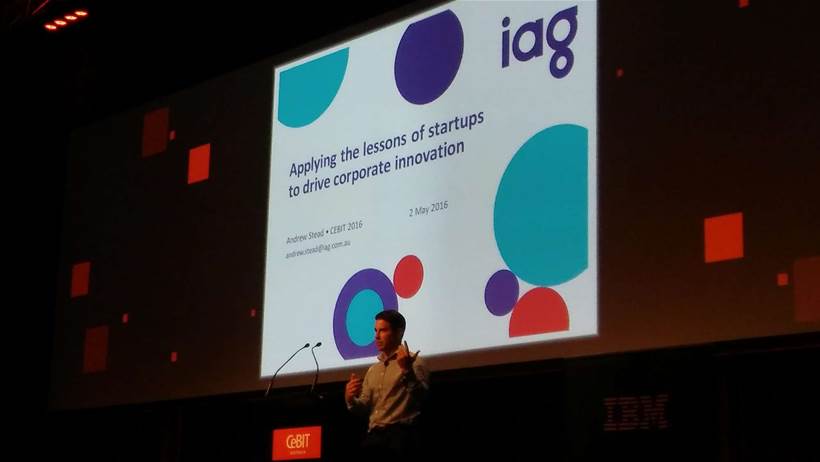As corporate Australia’s fascination with innovation and start-up culture continues unabated, the director of strategic initiatives at insurer IAG’s Customer Labs project is wrestling with how to grow a start-up – and perhaps even a $1 billion ‘unicorn’ – from inside a corporate shop.
“There’s a lot of interest in corporates about the start-up process at the moment,” Andrew Stead told CeBIT’s big data analytics conference in Sydney.
“There’s a phenomena at the moment for the boards of ASX-listed companies to tour Silicon Valley. They come away saying they’re going to be disrupted and that they must put in place some sort of plan.
“So if you’re inside these corporates, much is talked about disruption from start-ups and new technologies. That drives us to look at opportunities to change.”
Though Stead has been with IAG for less than three months, his mission is to effectively build and grow start-ups inside a corporate environment.
“This for me is the start of a journey of an experimental phase,” Stead said.
“I’ve come out of accelerators and incubators. The reason I joined IAG was to try and bring in some of those mechanisms into the business.
“But you have to be clear about what the objectives are for the organisation and how they best fit the type of program you want to initiate.”
One of the main problems that start-ups face is that their trajectory isn’t linear.
“You can’t tell them to go through these five stages and do these ten things and have that lead to success,” Stead said.
“What tends to happen is as people build out corporate innovation programs, the start-ups are very successful in being part of the program, but you get to the end of it not necessarily with a proposition that resonates with customers, or one that you can use to drive revenue and growth in [the corporate] organisation.”
Growing a start-up is also likely to challenge the internal acceptability of failure. Stead said typically only one in five start-ups were able to achieve an exit of some kind.
“That brings up the whole acceptance of failure inside a corporate,” he said.
“How many initiatives do we have to do in order to get something that’s of benefit to the business?”
There are also likely to be other cultural differences that tip out of a corporate start-up incubation program.
“A start-up is very different to a corporate. It’s trying to figure out where it fits into the world so you need to allow it freedom to do that,” Stead said.
“It may head off in some completely different direction as well so within a program how do you deal with that?
“We want an insurance product but it heads off into some other financial services or beyond. Can we white label that product and just use it for us? If it goes offshore – and there’s a big drive for start-ups to go into the US to really attract serious money – do we keep the IP rights for Australia and allow the start-up to chase the rest of the globe?
“That’s some interesting things hopefully we’ll get to in a couple of years, all going well at IAG. But how long do you keep letting a start-up do it?
“You look at the average angel investment deal takes eight years to get to an exit, and a corporate is never going to back something for eight years.
“So do we spin it out more quickly if it’s moving away from what the core of the business does and let it have a life of its own?”










